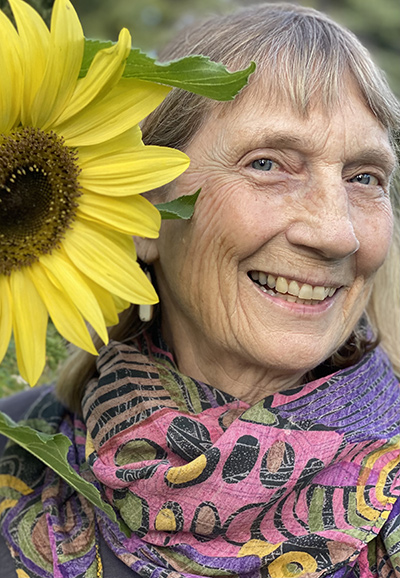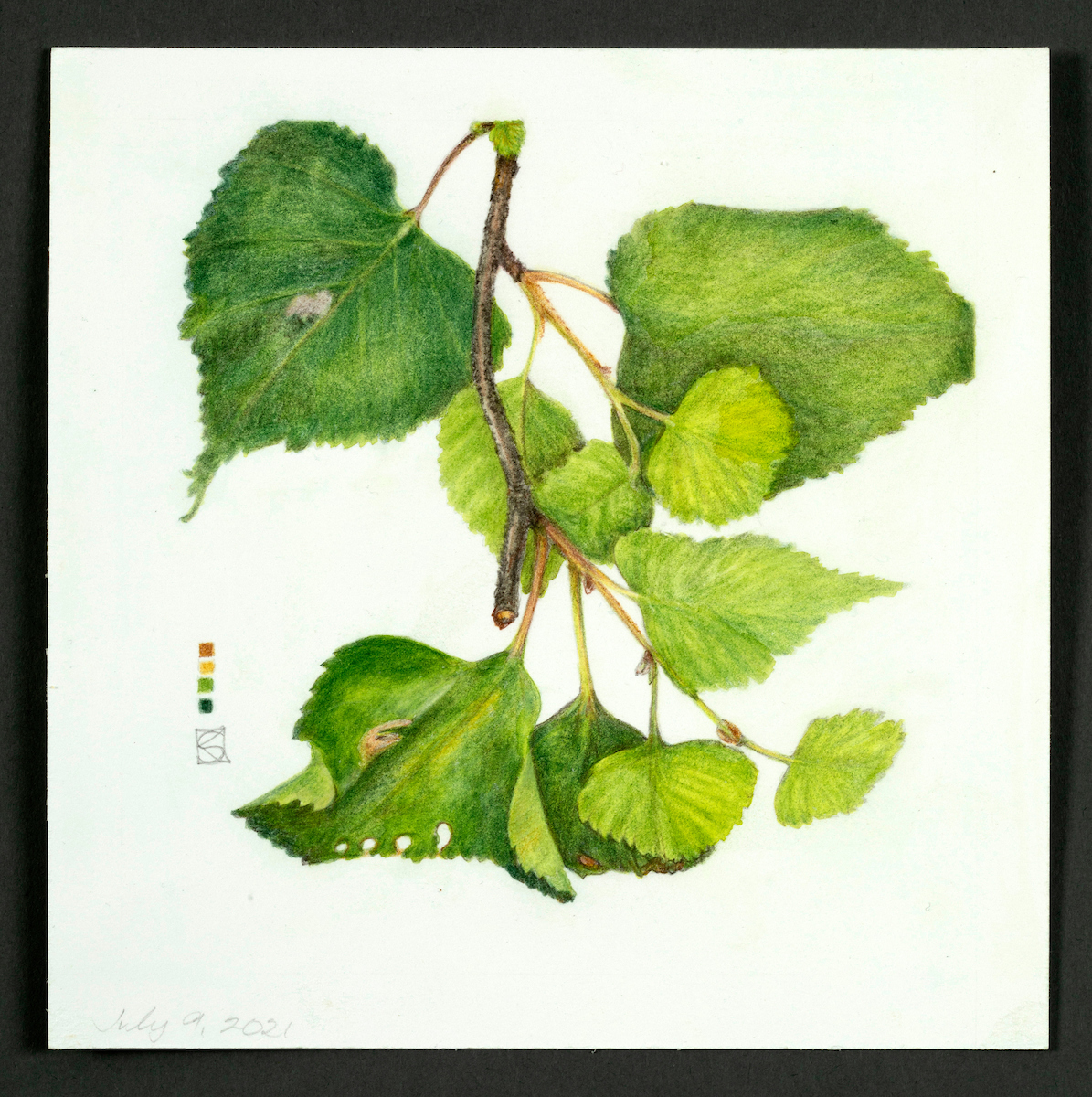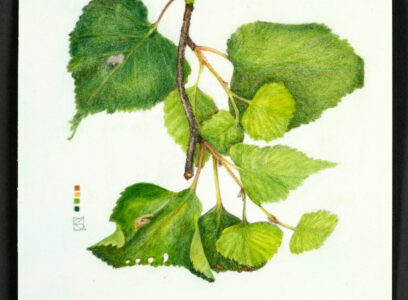Karen Stomberg
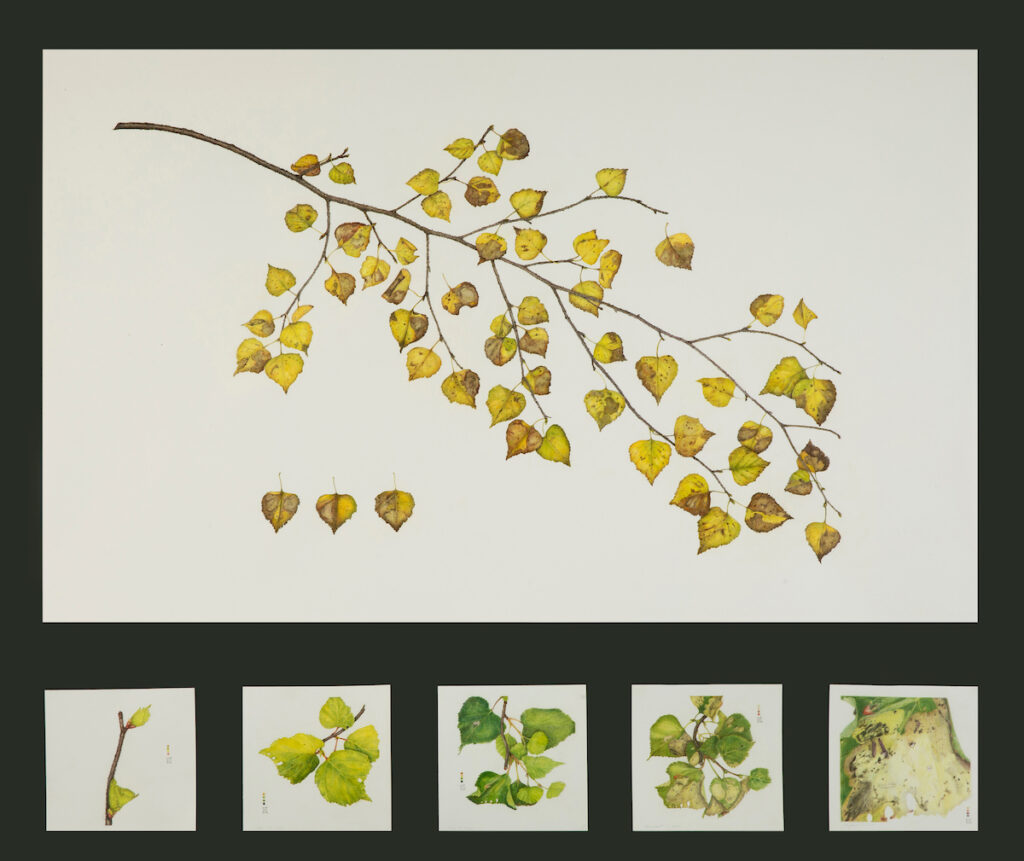
Betula neoalaskana Suite: Relics
My familiarity with the birch species Betula neoalaskana, coupled with concern about the speed of ecological changes affecting them, inspired my ITOC project. I observed and chronicled one birch tree from before it budded until it went into dormancy in 2021.
On May 1, 2021, I met Jan Dawe, Director of OneTree Alaska, to choose my tree at the Agricultural and Forestry Experiment Station (AFES) at the University of Alaska Fairbanks. The AFES experimental plot is located on the Ancestral lands of the Dena people of the lower Tanana River.
The tree I chose has graceful long branches and luminous pink-tinged bark. My dog and I visited it seventy-five times. I am a botanical artist and naturalist, so I planned to make small drawings daily, at all stages of growth. I wanted to get air and soil temperatures, make weather notes, and record sounds.
My observations widened to plants along the trail. I took hundreds of photos recording seasonal changes in everything for art references.
By mid-May, I was already noticing insect activity on leaves growing from the numbered nodes on a small branch I documented daily. As hot dry weather persisted, yellow-brown blistering on leaf surfaces increased. The top of my tree and all 144 birch trees in the AFES plot turned brown by August.
In mid-September Dr. Pat Doak (University of Alaska Fairbanks), a Bonanza Creek LTER scientist, came and attributed the major damage to birch blotch miner. I talked to Jan Dawe about the blotch miner at that point. She was very interested in the data correlations between temperatures and dates of infestation observations. She collected leaves from each tree in the plot for later study. My work became a reciprocal collaboration with OneTree Alaska.
The pathology of the leaves on my tree is the focus of my artwork for the ITOC exhibition.
I used a branch with damaged leaves to make an herbarium specimen and also a large botanical drawing that details each strangely beautiful leaf. I also made a series of individual leaf drawings over time.
Historical Alaska plant specimens chronicle change and resilience. I drew a Betula neoalaskana specimen from Harvard University Herbarium that was, amazingly, collected in 1928 near the (now) AFES study plot.
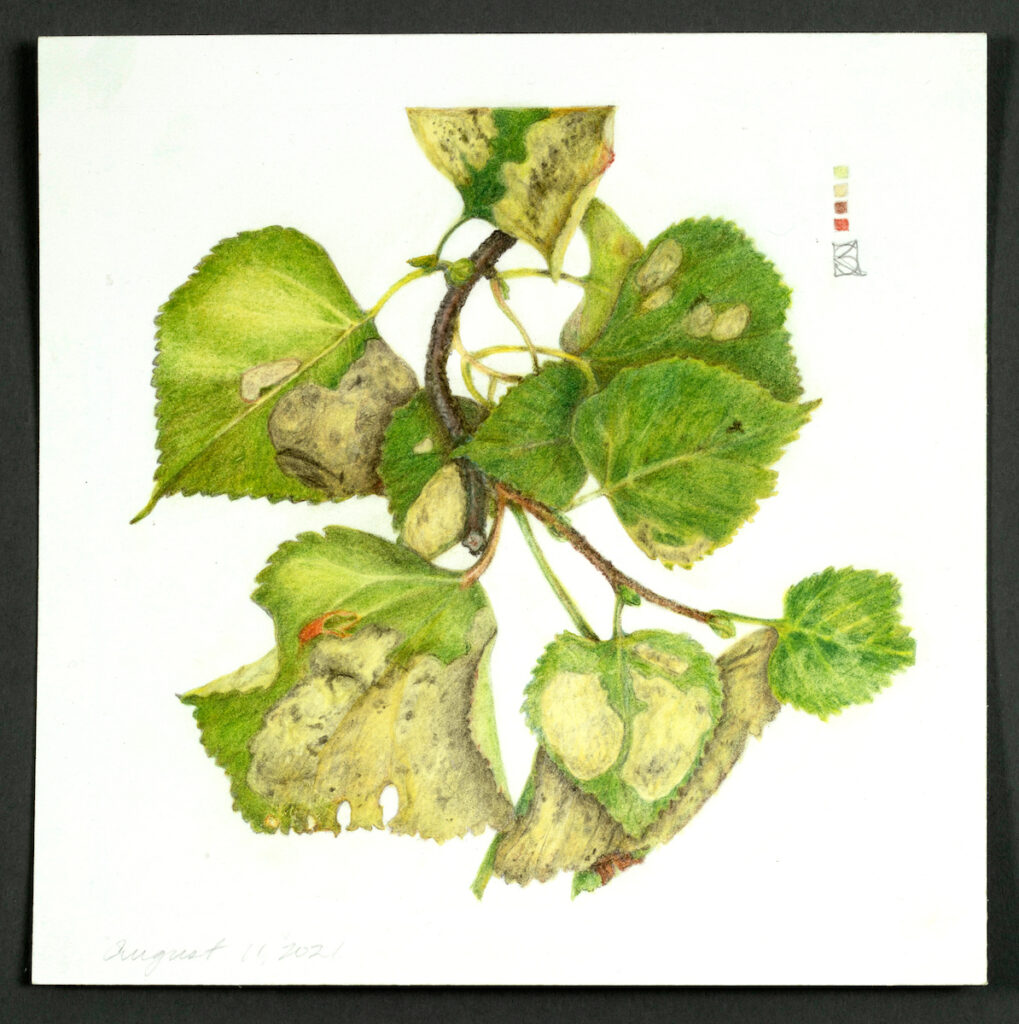
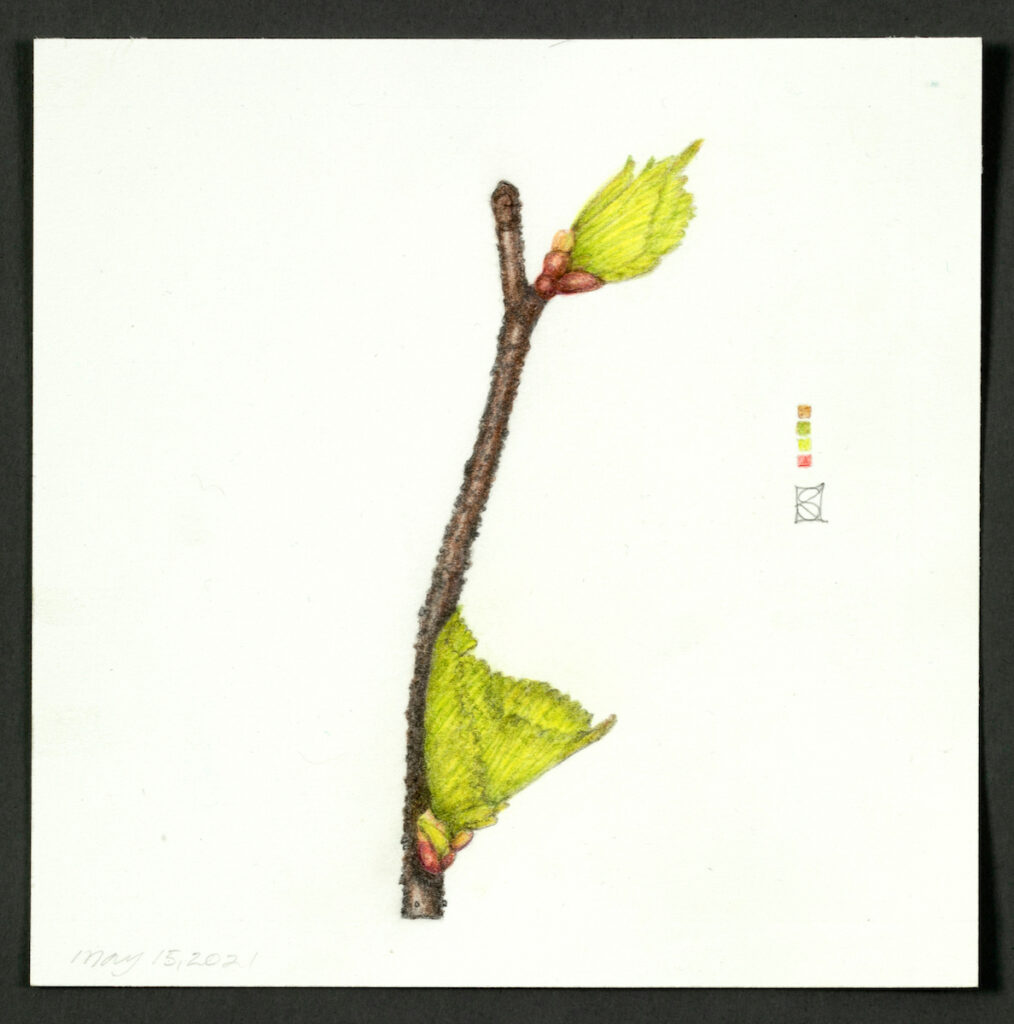
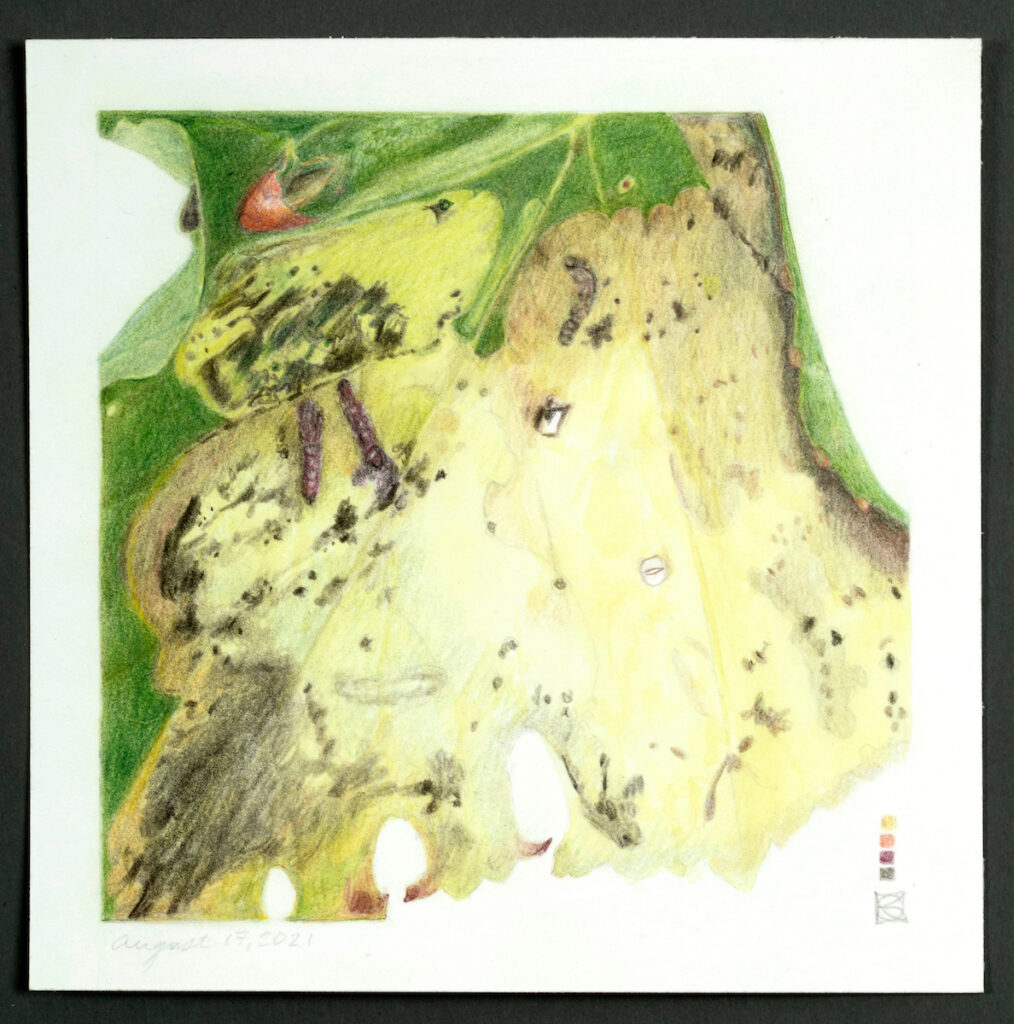
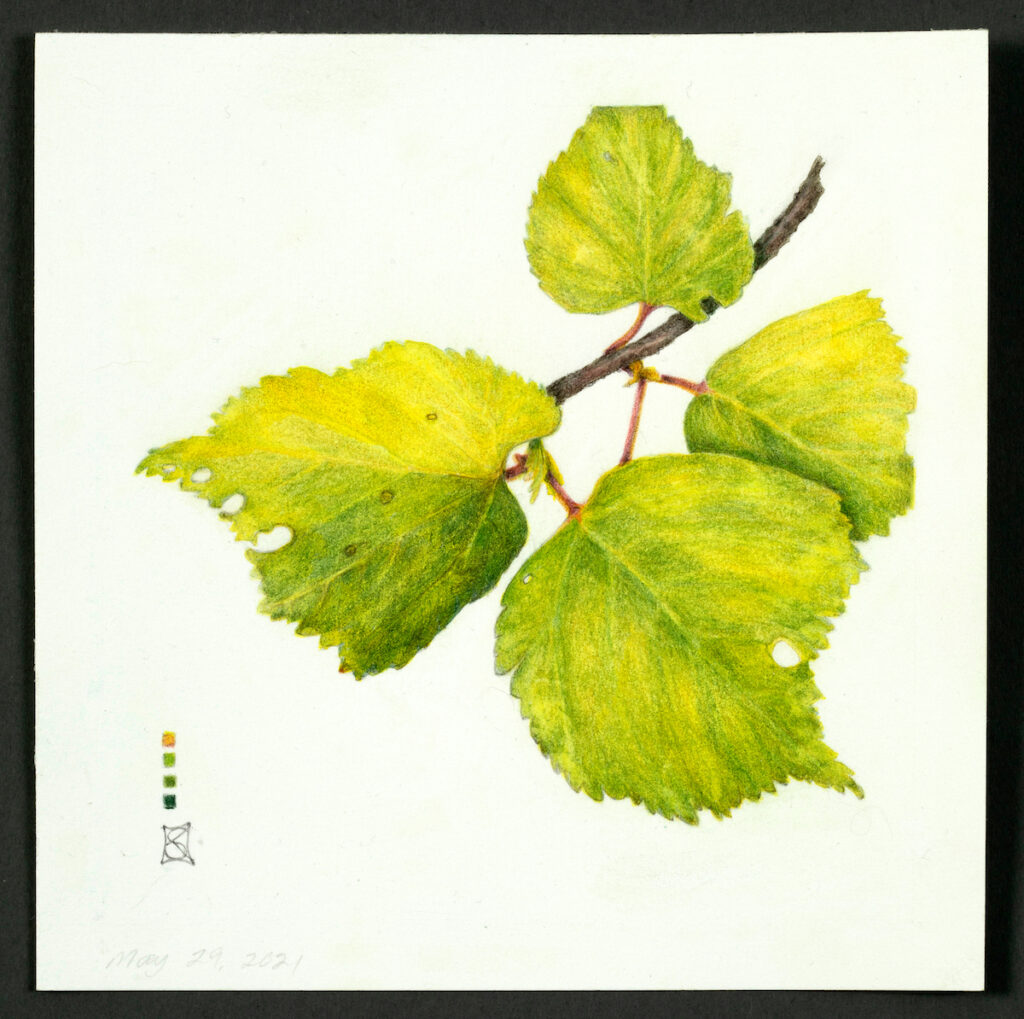
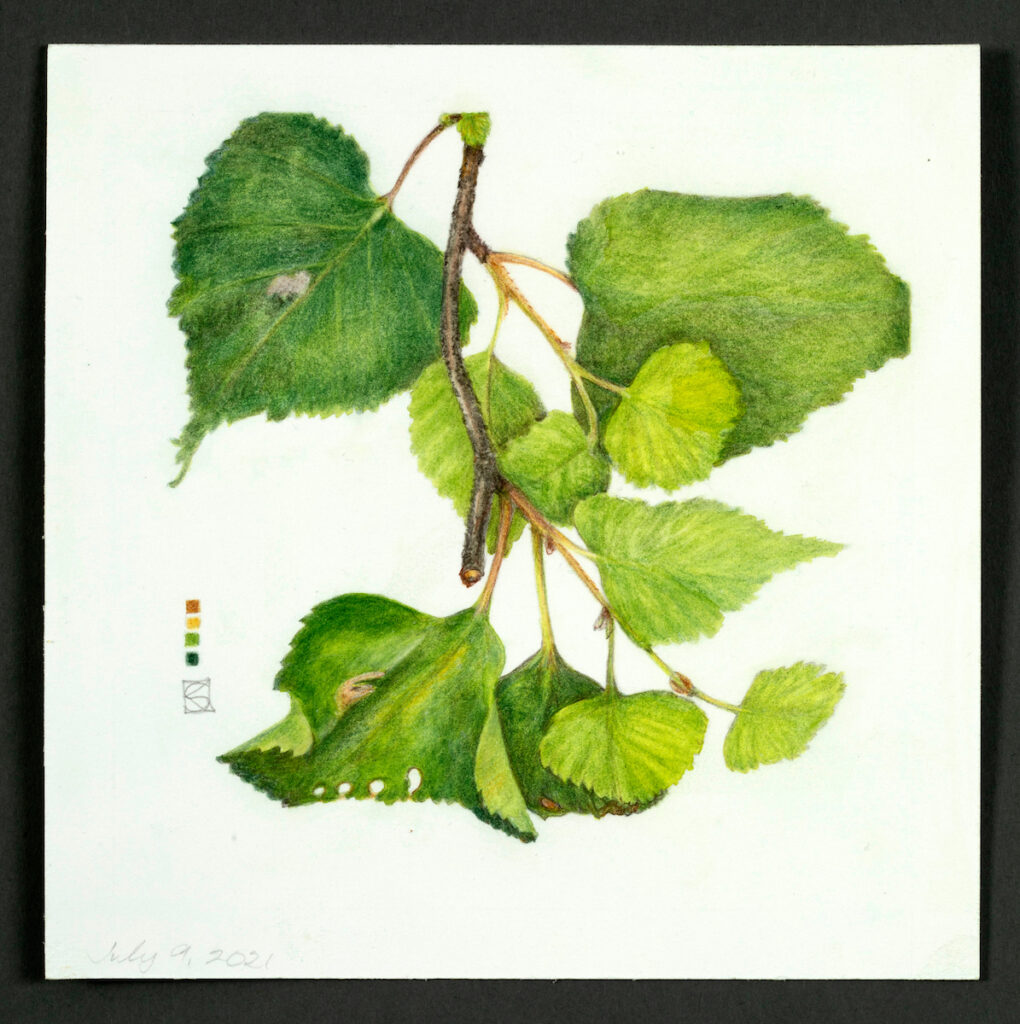
“To study how trees grow is to admire not only their persistence but also their imagination. Live wood just won’t quit. Every time you knock it down, it comes back again, but when a plant sprouts back, it is not a random shot, like some finger simply raised to make a point. Rather, the growing tip of any stem — what botanists call the meristem — answers with an inborn, complex pattern, like a musical tune.” Arborist William Bryant Logan
Karen Stomberg
Karen Stomberg is a visual artist and naturalist, retired from a long career as an arts educator and administrator. Alaska has been her home and inspiration for five decades. She practices and teaches botanical art.
Her book, Collected Treasure: Six Alaska Wildflowers, was published in 2018 to accompany the solo exhibition of drawings at the Bear Gallery in Fairbanks. The Collected Treasures drawings are now in the UAMN collection.Artwork from Traces, Plants of the Kachemak Bay Region, a 2020 solo exhibition at the Bunnell Street Arts Center, can be seen here: https://www.bunnellarts.org/stombergpettibone-nov-2020/
